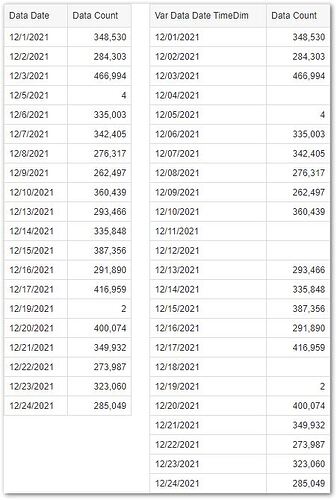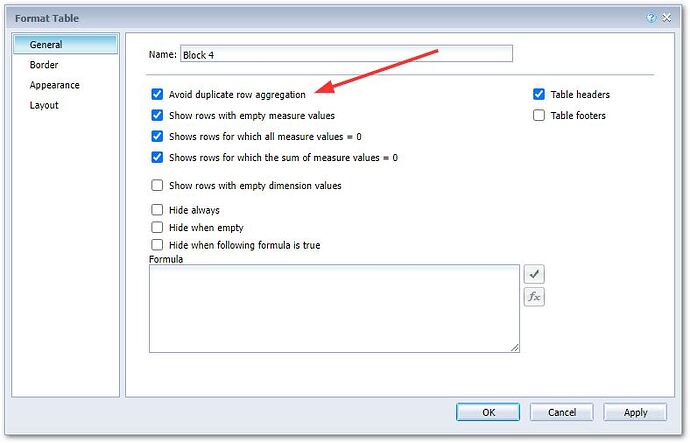The TimeDim() function will fill in the empty periods in your time data. The problem with that though is if it is the end of your date range that is missing data those dates will not show up. Let me show you what I mean. Here is my sample data from 12/01/2021 through 12/26/2021 (note missing dates) in the table on the left. The table on the right is the my Var Data Date TimeDim variable defined as…
=TimeDim([Data Date]; DayPeriod)
So we have our missing dates in the middle, but not at the end (12/25/2021 and 12/26/2021). To get those dates you need a query to return all the dates in your specified range. If you have a universe based on a calendar you could use that. Free-hand SQL based on a calendar table would suffice as well.
If you have neither of those we can still get it to work using free-hand SQL with a CTE. This is SQL Server syntax. You will have to modify this SQL to work for whatever database platform you have if it isn’t SQL Server.
Here is the SQL…
–Source: Generate a Date Table via Common Table Expression (CTE) | Data and Analytics with Dustin Ryan
;with dates ([Date]) as (
Select convert(date,‘2021-12-01’) as [Date] – Put the start date hereunion all
Select dateadd(day, 1, [Date])
from dates
where [Date] < ‘2021-12-26’ – Put the end date here
)select [Date]
from dates
option (maxrecursion 32767) – Don’t forget to use the maxrecursion option!
Here is a demo.
Now that you have a query returning all of the dates in your range you can merge the date from that query to your Data Date.
You can then put the date object with all of dates or the Merged Date in table with any measures from your pre-existing query and there you have it.
If you need to add dimensions from you pre-existing query I think you will need to create variables for them with Qualification set to “Detail” and the Associated dimension set to “Merged Date” (or whatever you called it). And if you do that I believe you will also need to check “Avoid duplicate row aggregation” check box within the Format Table properties.
Let us know how it goes.


